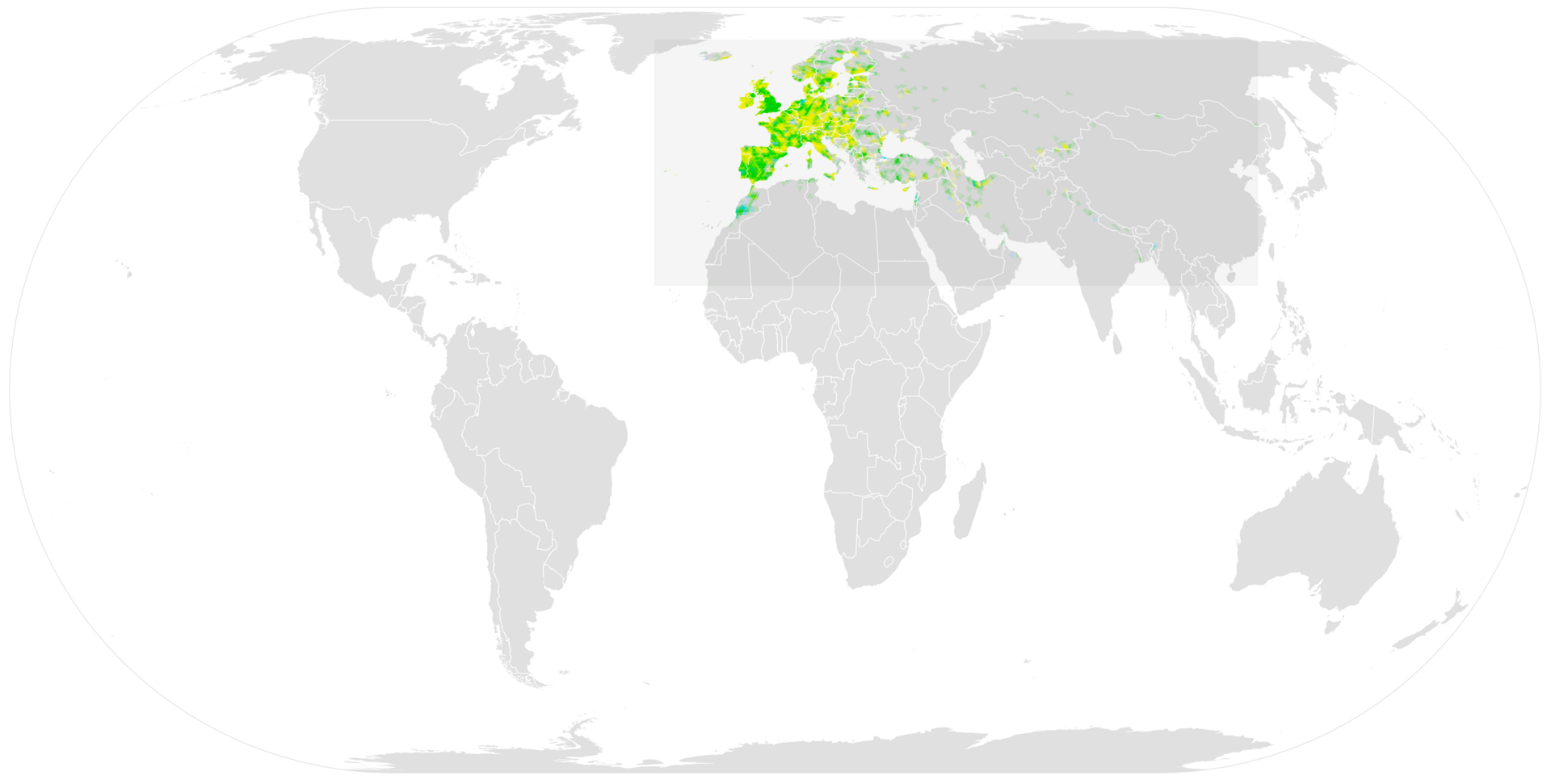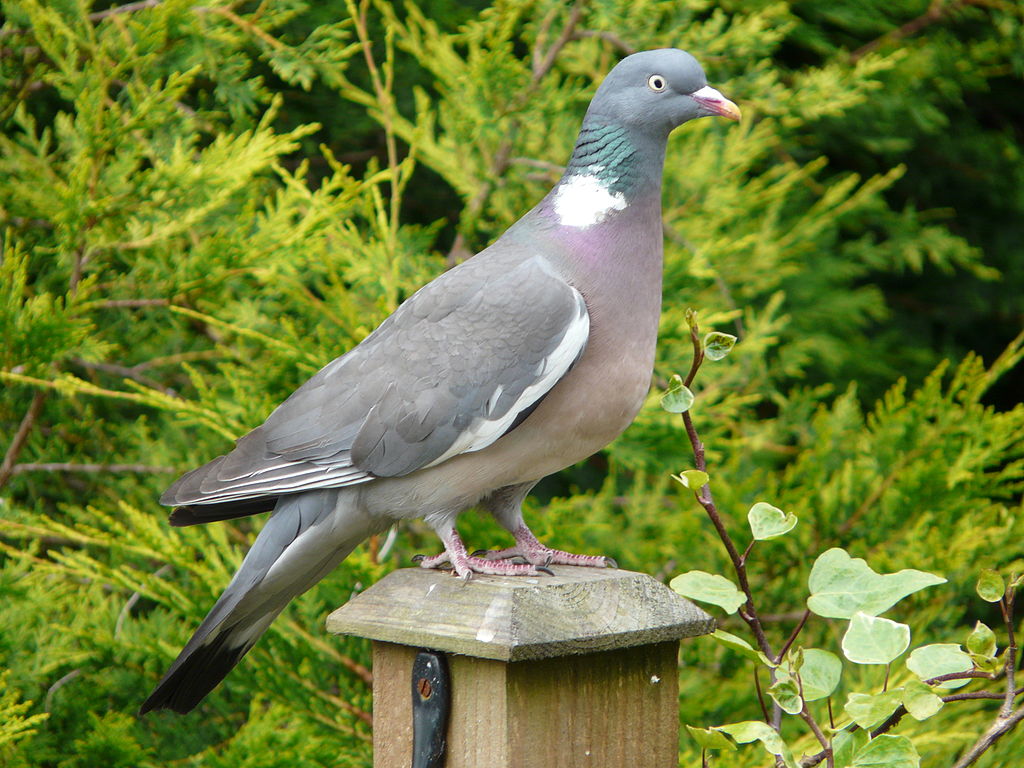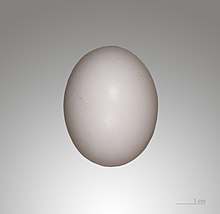The common wood pigeon was formally described by the Swedish naturalist Carl Linnaeus in 1758 in the tenth edition of his Systema Naturae. He placed it with all the other pigeons in the genus Columba and coined the binomial name Columba palumbus.[3] The specific epithet palumbus is from the Latin palumbes for a wood-pigeon.[4]
Five subspecies are recognised, one of which is now extinct:[5]
- C. p. palumbus Linnaeus, 1758 – Europe to west Siberia and Iraq; northwest Africa
- † C. p. maderensis Tschusi, 1904 – Madeira (extinct)
- C. p. azorica Hartert, 1905 – east and central Azores
- C. p. iranica (Zarudny, 1910) – southwest and north Iran to southwest Turkmenistan
- C. p. casiotis (Bonaparte, 1854) – southeast Iran to Kazakhstan to west China, northwest India and Nepal
Description
Adult in Birmingham, England
Juvenile birds do not have the white patches on either side of the neck. When they are about six months old (about three months out of the nest) they gain small white patches on both sides of the neck, which gradually enlarge until they are fully formed when the bird is about 6–8 months old (approx. ages only). Juvenile birds also have a greyer beak and an overall lighter grey appearance than adult birds. The call is a characteristic cooing, coo-COO-coo-coo-coo.
Distribution and habitat
In the colder northern and eastern parts of Europe and western Asia the common wood pigeon is a migrant, but in southern and western Europe it is a well distributed and often abundant resident. In Great Britain wood pigeons are commonly seen in parks and gardens[8] and are seen with increasing numbers in towns and cities.Behaviour
A flock of common wood pigeons feeding in a field
Adult sitting on its nest in a tree
Egg
Hatching of a Common Wood Pigeon
Breeding
Two young Columba palumbus in a nest
The nests are vulnerable to attack, particularly by crows, because they live in the countryside, the more so early in the year when the leaf cover is not fully formed. The young usually fly at 33 to 34 days; however, if the nest is disturbed, some young may be able to survive having left the nest as early as 20 days from hatching.
In a studies carried out using ring-recovery data, the survival rate for juveniles in their first year was 52 per cent, and the adult annual survival rate was 61 per cent.[9] For birds that survive the first year the typical lifespan is thus only three years,[10] but the maximum recorded age is 17 years and 8 months for a bird ringed and recovered on the Orkney Islands.[11][12]
Diet
Most of its diet is vegetable, round and fleshy leaves from Caryophyllaceae, Asteraceae, and cruciferous vegetables taken from open fields or gardens and lawns; young shoots and seedlings are favoured, and it will take grain, pine nuts, and certain fruits and berries. In the autumn they also eat figs and acorns, and in winter buds of trees and bushes. They will also eat larvae, ants, and small worms. They need open water to drink and bathe in. This species can be an agricultural pest, and it is often shot, being a legal quarry species in most European countries. It is wary in rural areas, but often quite tame where it is not persecuted. Young common wood pigeons swiftly become fat, as a result of the crop milk they are fed by their parents. This is an extremely rich fluid that is produced in the adult birds' crops during the breeding season.[13][14]Predators
Binomial name
Columba palumbus

Global range
Year-round range Summer range Winter range







No comments:
Post a Comment
Note: Only a member of this blog may post a comment.